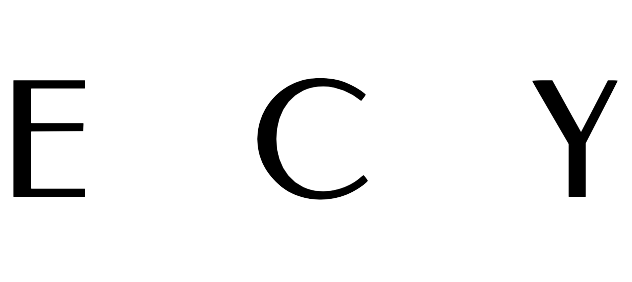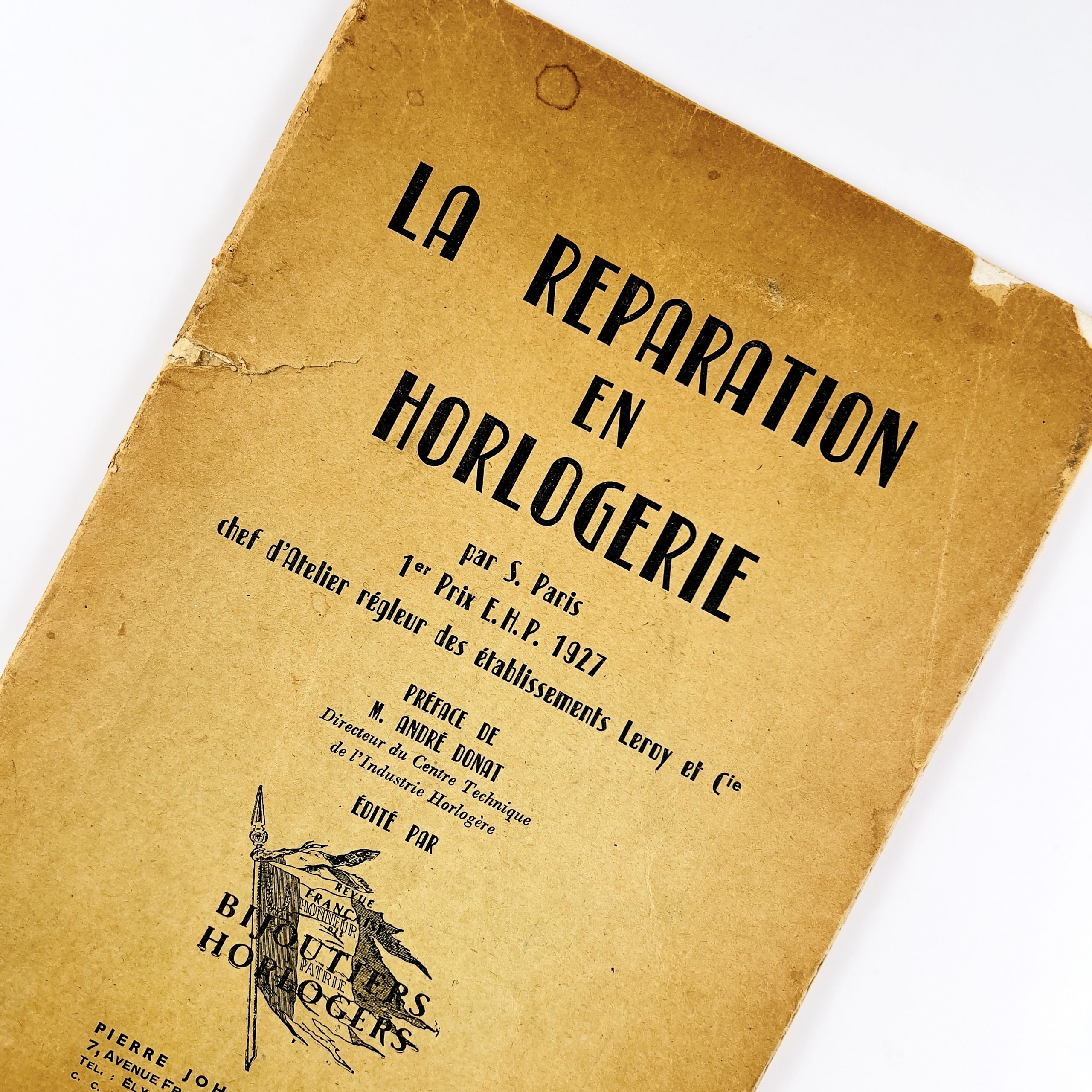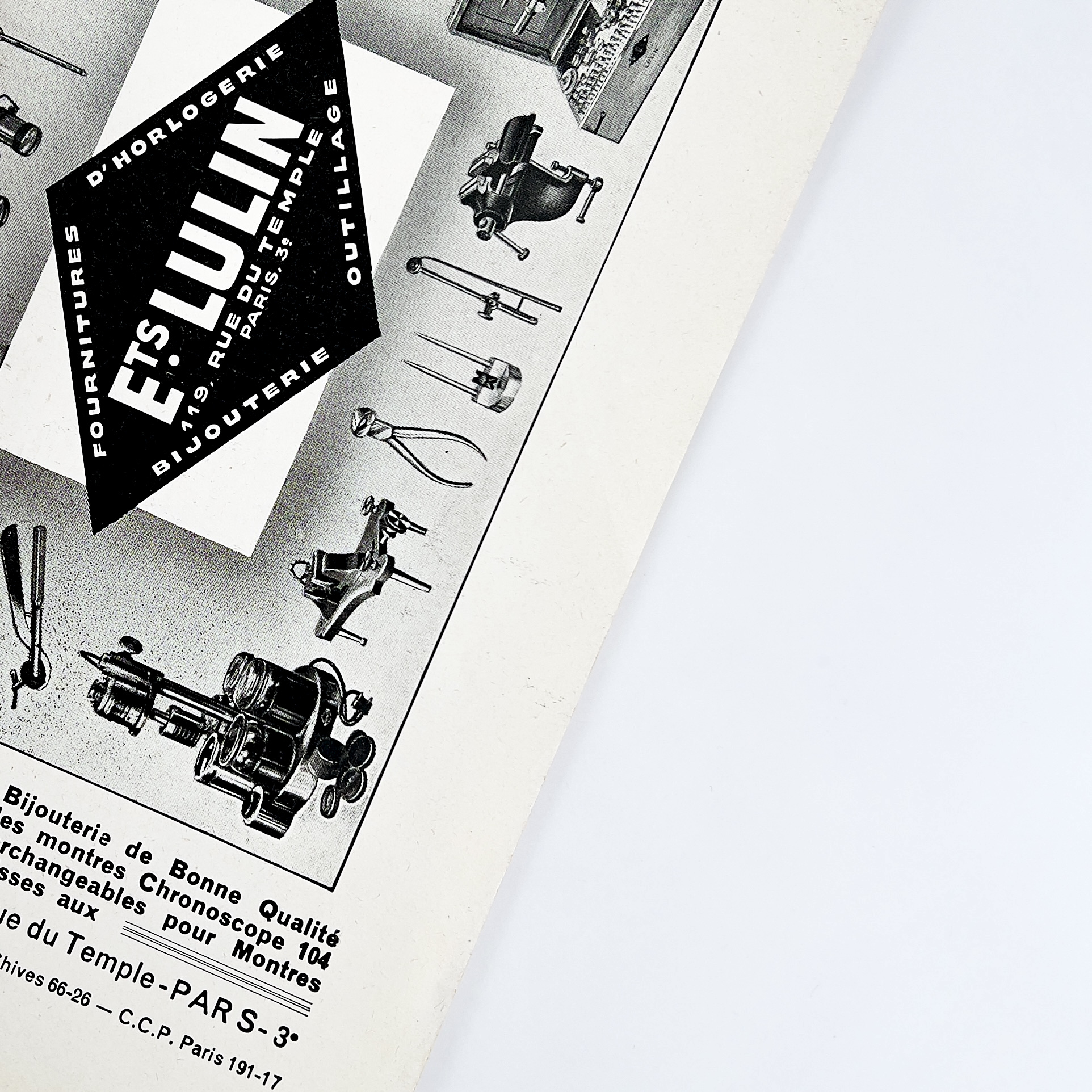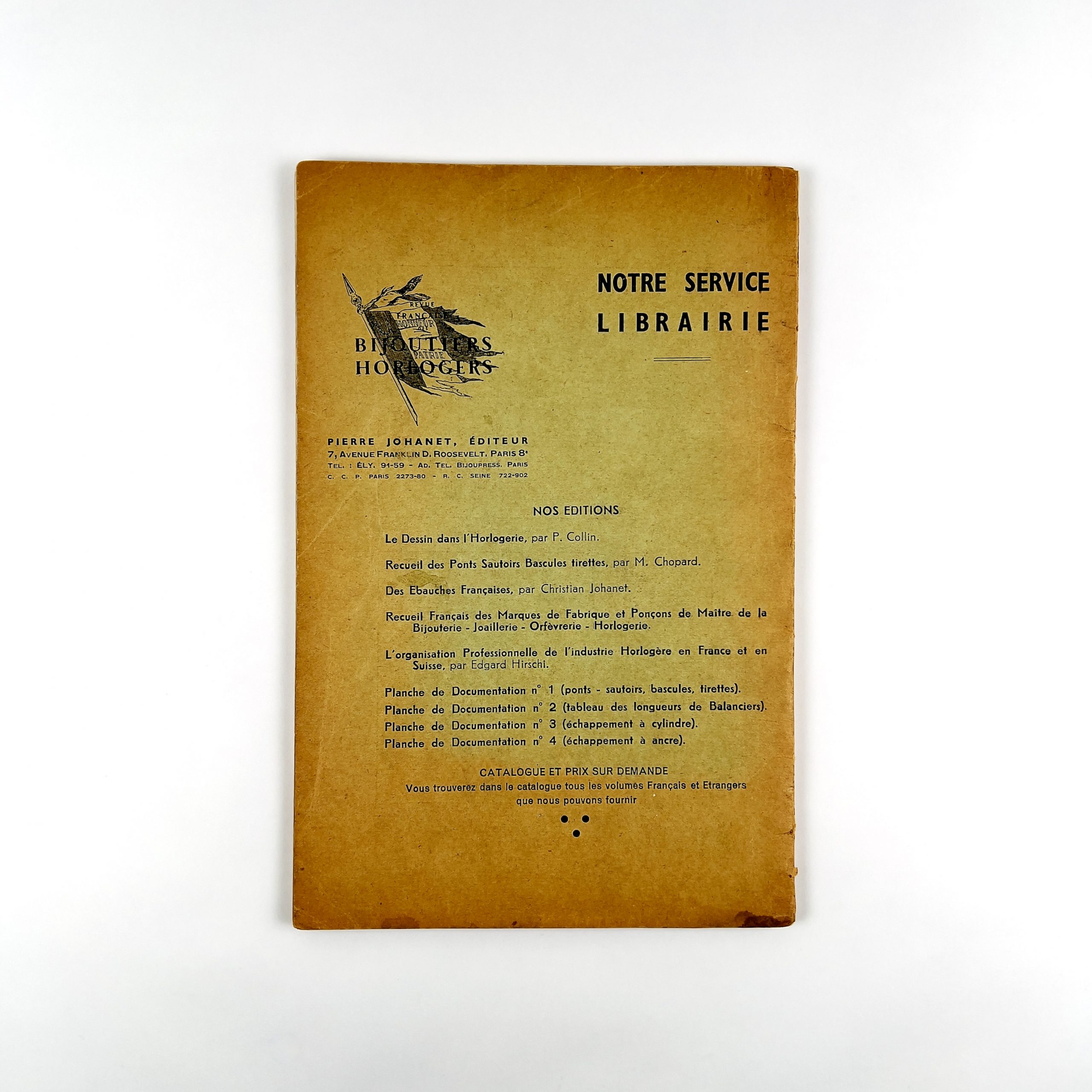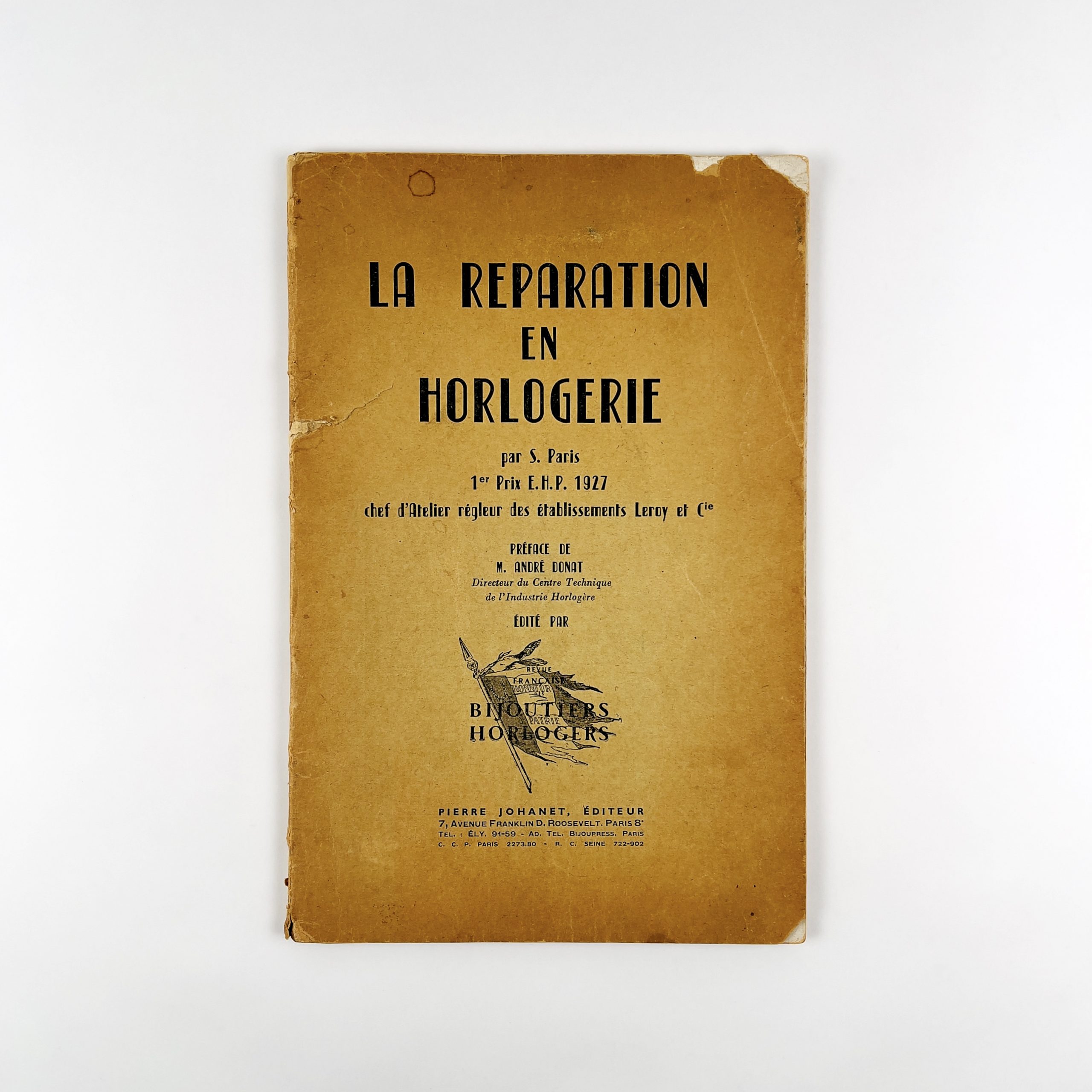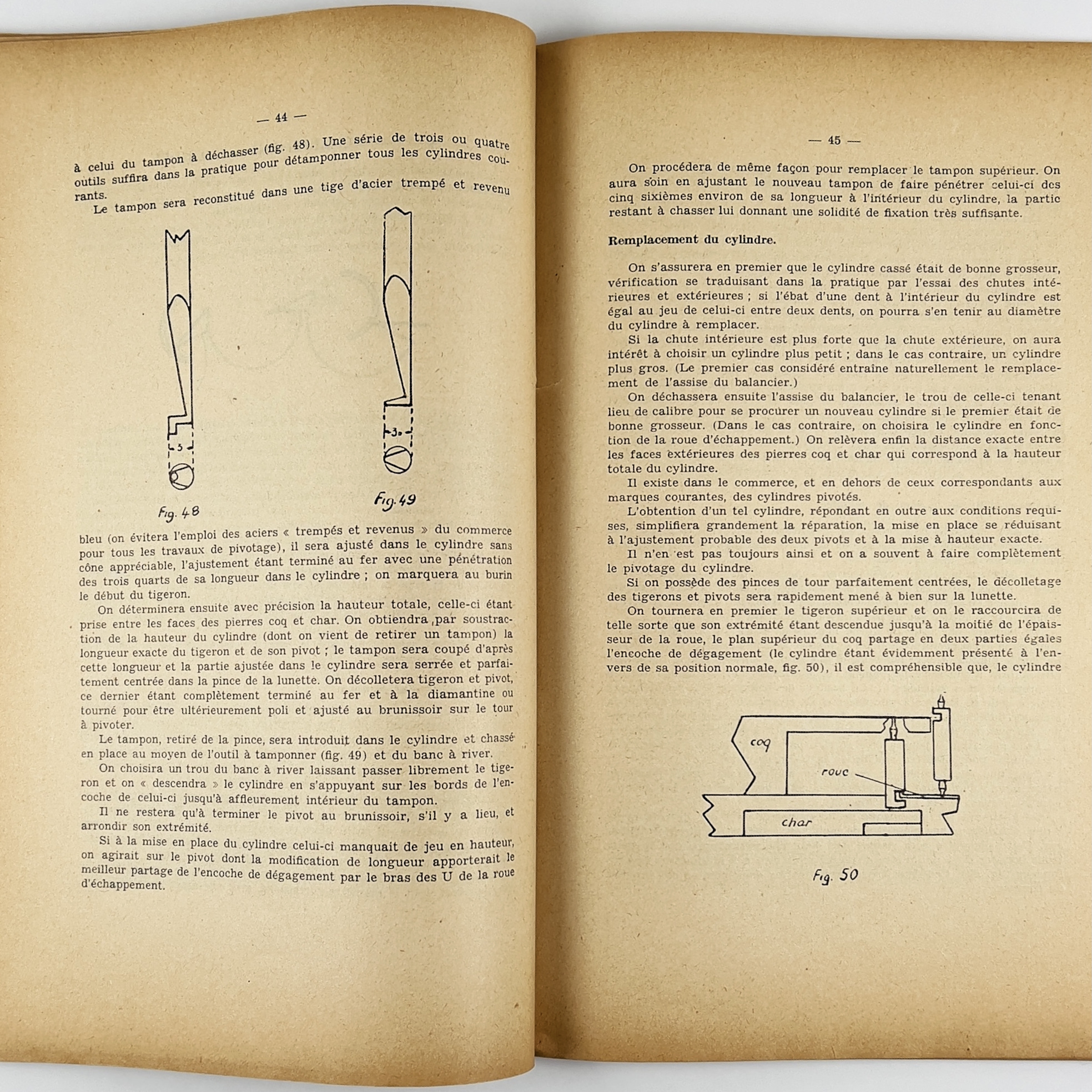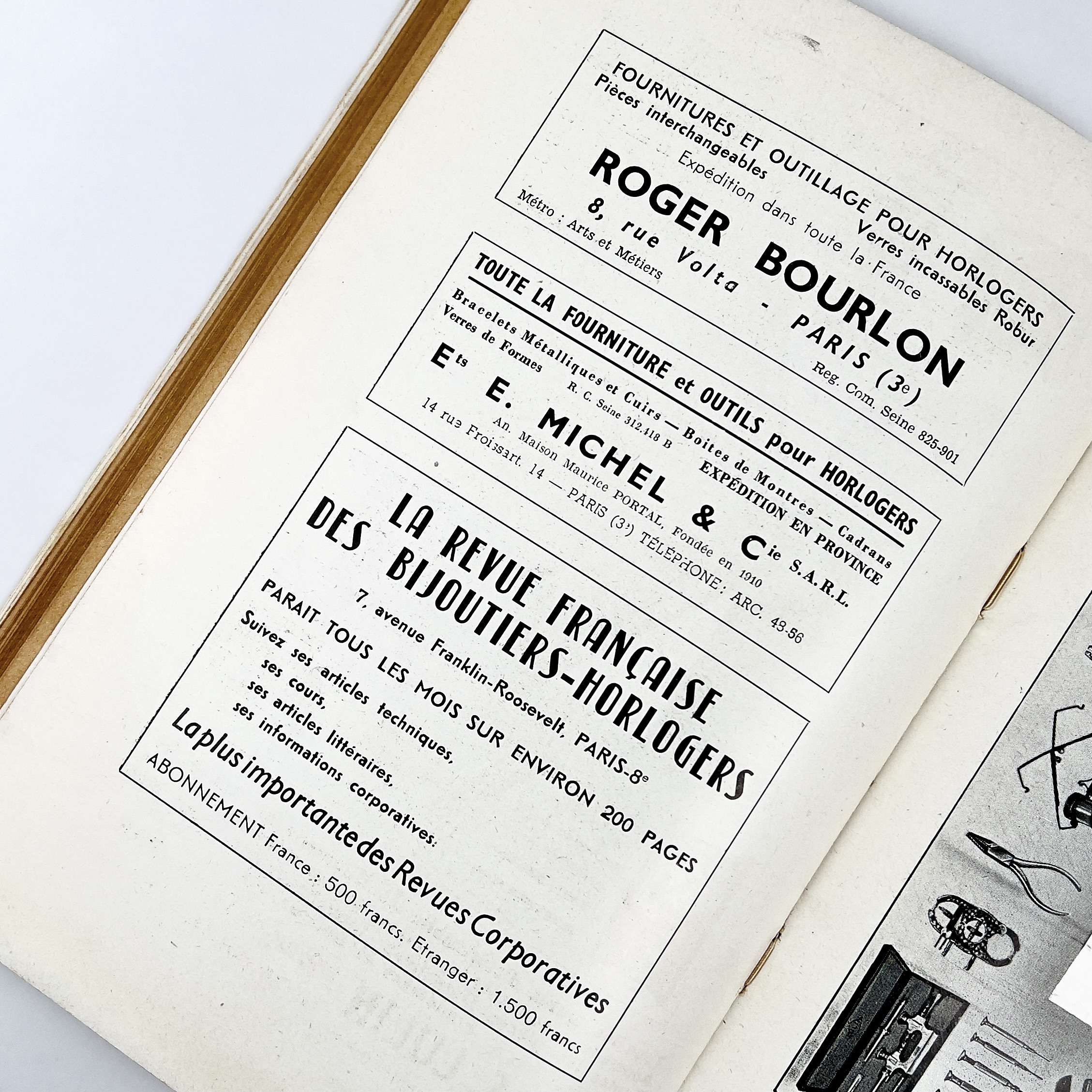-
BOOK
« LA RÉPARATION EN HORLOGERIE »
BY S.PARIS
1930
-
-
Superb reference work by S. Paris, 1st Prix E. H.P. 1927 and head of the Atelier régleur at Leroy et Cie, covering chapter after chapter the rules of watch repair in the 1930s.
-
Foreword by André Donat, General Manager of the Besançon watchmaking industry technical center, from which the following extract is taken:
No wonder the layman considers his watch to be the most marvellous of mechanics, and Sacha Guitry wrote that "among the thousand little masterpieces of nature, there is none more mysteriously complicated or prettier than it".
The watch is also a measuring instrument, but one that has special features over the others. An ammeter, a pyrometer, an altimeter, a speed or revolution counter, a manometer, a length-measuring comparator to 1/100 or 1/1000° of mm. have only one hand like the first clocks, and can only be read with a relative precision of 10%, 1% or 1 0/000 at most of their measuring capacity. A modern watch has at least three, and not by chance - or convention - but by necessity, because one would not be enough to reflect the precision of its mechanism - which reaches 0.5 per thousand for common watches, and one ten-thousandth for very good watches.
For three centuries, a host of artists and scientists have been working to make the watch the most precise and miniscule of measuring instruments. Didn't they first enable the discovery of the world, since the problem of navigation was linked to that of determining longitudes at sea, and the latter to that of keeping time? Then, through their work, they contributed to the development of science and technology, by the very fact of the precision required, the small dimensions involved and the mechanical mass production of the parts that make it up.
-
The seed sown from Huygens, Leroy and Berthoud to Ch.-Ed. Guillaume and the thousands of mechanics who made mechanical watchmaking possible, has germinated, and the watchmaker - the watch constructor of the middle of this century - is the custodian of a rich harvest.
And yet, today, we realize that there is still land to be cleared, where the plough of physical chemistry, metallurgy and mathematics will have to pass, while the technician will further develop mechanization.
But we can't yet dream of a watch that will retain - if not forever, at least for a long time - its primitive properties despite wear, shock, water or dust.
What a pity if the work of art, the fruit of an historic process, were to lose most of its qualities on its first visit to the watch doctor!
Fortunately, France is one of the few countries where the watch doctor has acquired a good basic training enabling him to make a reliable diagnosis and operate with accuracy. This is to the credit of our four watchmaking schools, which provide appropriate teaching and training.
An interesting and rare book.
